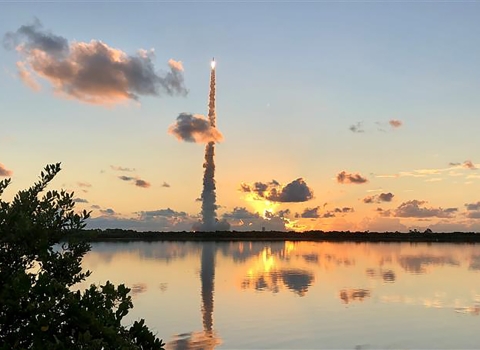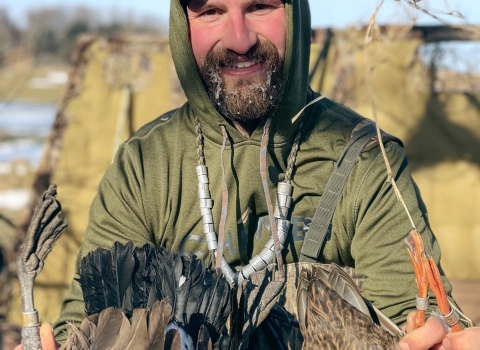When the Deepwater Horizon oil spill occurred in 2010, most people probably thought only about the devastation at hand. And for the past 12 years, conservation partners have dedicated themselves to Gulf restoration. (You can read about some of the latest work at the Department of the Interior’s Deepwater Horizon Restoration webpage.) But the historically large Global Settlement funds can be used for a broader range of purposes than traditional restoration, including bolstering community resilience and sustainability along the Gulf Coast.
To mitigate the oil spill’s harmful impacts on Gulf communities, the Department of the Interior is using the money to fund the Tribal Youth Conservation Corps. Managed by the Bureau of Indian Affairs, the program has granted $50,000 a year to six Tribes with lands and cultural connections to the Gulf Coast.
With the grants, the Coushatta Tribe of Louisiana, the Mississippi Band of Choctaw Indians, the Poarch Band of Creek Indians, the Miccosukee Tribe of Indians, the Seminole Tribe of Florida, and the Chitimacha Tribe of Louisiana have conducted multiple years of Youth Conservation Corps sessions that help high school-age Tribal youth learn more about ecology, environmental restoration, the relationship of their native culture to the environment, and the skills that may lead to careers in the natural sciences.
“We are so pleased to fund Tribal after-school and summer programs that teach youth about the environment and the natural resources that figure so prominently in their cultures,” says Mary Josie Blanchard, the Department’s Director of Gulf of Mexico Restoration. “We hope that through the Tribal Youth Conservation Corps program, youth gain job skills and the knowledge needed to promote restoration, not only on Tribal lands, but across the Gulf.”
Our Gulf Restoration Office is joining forces with our National Conservation Training Center to increase awareness of the program by producing a video. “We want to get the word out about the benefits of programs like the Tribal Youth Conservation Corps – programs that use active, hands-on learning to teach students about the environment. In the video, we’ll ask the students about what they learned and ask if they have ideas about what we might do in the future to restore the Gulf. We hope these students will be our future colleagues,” says Michelle Eversen, Assistant Regional Director of our Gulf Restoration Office.
The Tribes have tailored their programs, lessons and activities to their own restoration needs and goals:
Seminole Tribe of Florida
With reservations in the historic Everglades watershed, the Tribe focuses, year after year, on monitoring water quality on their reservations. Venturing out from their classrooms, Seminole youth have learned how to properly test wetlands and other water bodies for temperature, dissolved oxygen, and pollutants. “Some of their trips into the field required the students to wade in waist-deep water with their buckets,” says Harold Peterson, natural resources officer for the Bureau of Indian Affairs. “But the students took it all in stride, learning and practicing good sampling techniques and getting accurate results.”
Miccosukee Tribe of Indians
Also in Florida, Miccosukee Tribe youth have learned multiple ways they can support their Tribe and care for local natural areas. One of their projects includes cultivating their own community garden. Starting early in the year, they plant an array of vegetables. They maintain the garden throughout the growing season, and then in the shade of a thatch-roofed and open-sided chikee hut next to their garden, they collect their harvested crops before sharing them with their community. The Miccosukee youth have also learned the importance of periodic fires to maintaining healthy ecosystems and have learned and practiced prescribe burn techniques.
Coushatta Tribe of Louisiana
Rutherford Beach, in Creole, Louisiana, was the site of an ambitious restoration project completed by the Coushatta Tribe’s youth. With expertise and materials provided by the USDA’s Soil and Water Conservation District, the students planted 4,000 clumps of dune grass to reduce erosion and protect nesting habitat for shore birds. The smiles on the kids’ faces at the end of a long and hot day of planting revealed a deep sense of pride in their work.
Mississippi Band of Choctaw Indians
The Mississippi Band of Choctaw Indians hires the youth as interns while they learn about the importance of respecting their Tribal lands, their cultural connections to those lands, and their responsibility to maintain natural areas free of debris, such as fallen trees and branches. They conserve their historic Tribal mounds, interpretive trails, and waterways while also learning about local game and wildlife laws in classes taught by an instructor from the Mississippi Department of Wildlife, Fisheries, and Parks.
Chitimacha Tribe of Louisiana
The Chitimacha Tribe Youth Conservation Corps Program means “providing Tribal youth with working skills while gaining Tribal/community pride through work aimed at maintaining and beautifying the Chitimacha community,” according to the Tribe’s youth program coordinator. Over the years, youth have constructed a wheelchair-accessible path that leads to a boat landing at Bayou Teche, a water body of historic and cultural importance to the Tribe. They have also learned to cultivate river cane, a plant used for generations by the Chitimacha for basket making, and conducted a river cleanup.
Poarch Band of Creek Indians
The Poarch Band of Creek Indians in Alabama also learned how to cultivate river cane, the importance of land stewardship, and the role fire plays in maintaining healthy ecosystems. Their hands-on field experience included participating in prescribed burns on Tribal lands.
The Deepwater Horizon oil spill was a devastating blow to the Gulf of Mexico, not only to its wildlife and habitats but also to the economy that supports Gulf Coast communities. The spill’s Global Settlement funds allow us to help those communities in myriad ways, including giving the youth of Gulf Coast Native American Tribes hands-on experiences that expand their knowledge, increase their job skills, and promote the understanding that everyone who wants to can have a role in restoring the Gulf of Mexico.





